The search for equity in health is one of the main objectives that guide PAHO's actions in the Americas, a region that continues show inequities. These inequities can be measured in terms of resource allocation, the design and implementation of health policies, and the outcomes from the implementation of such policies. In the field of health, inequities are manifested in unequal access to services, the adaptation of infrastructure to address priority problems, disparities that are particularly apparent between rural and urban areas, in areas where poverty is highly concentrated, and the situations of disadvantaged groups such as women, children, indigenous populations, young people, and the elderly, or in populations exposed to greater risks, with a greater incidence of disease or higher levels of social exclusion.
Identifying and measuring disparities and having an understanding of the specific health status of the population and its trends—while also identifying the most critical groups and areas—are essential for gathering adequate and relevant information that can be used in decision-making, developing health policies, and evaluating the results of initiatives. Measuring inequalities among countries and within a given country is a first step in the effort to reveal differences and foster decision-making that leads to actions and strategies designed to reduce, and ultimately eliminate, these inequalities.
In early 2005 in Argentina, a working group on inequalities in health was constituted in conjunction with the Ministry of Health. It sponsored a workshop on methodologies for determining health inequalities. A computer software known as "Brechas" ("Gaps") also was developed to promote and facilitate the analysis of health inequalities in Argentina and other countries in the Region.
 Progress also has been made in disaggregating health data at the subnational level. In the series Health Situation in the Americas: Basic Indicators, the booklets present up-to-date information by province or state, and even by municipio or district; similar gains have been made in the Immunization Newsletter. The biennial regional statistical booklet, Gender, Health, and Development in the Americas, also deserves mention. This joint PAHO, United Nations Development Fund for Women (UNIFEM), and United Nations Populations Fund (UNFPA) receives funding from the Ford Foundation and the governments of Norway and Sweden. The publication disaggregates core data by gender. Similarly, data on antiretroviral coverage, sexually transmitted diseases, and HIV/tuberculosis co-infection have been added to the information published on Human Immunodeficiency Virus (HIV).
Progress also has been made in disaggregating health data at the subnational level. In the series Health Situation in the Americas: Basic Indicators, the booklets present up-to-date information by province or state, and even by municipio or district; similar gains have been made in the Immunization Newsletter. The biennial regional statistical booklet, Gender, Health, and Development in the Americas, also deserves mention. This joint PAHO, United Nations Development Fund for Women (UNIFEM), and United Nations Populations Fund (UNFPA) receives funding from the Ford Foundation and the governments of Norway and Sweden. The publication disaggregates core data by gender. Similarly, data on antiretroviral coverage, sexually transmitted diseases, and HIV/tuberculosis co-infection have been added to the information published on Human Immunodeficiency Virus (HIV).
The Ministerial Summit on Health Research, held in Mexico in November 2004, and its declaration on health research and knowledge have led to the creation of a research registry that supports the regional launching of the International Clinical Trials Registry Platform (ICTRP). Progress also was also made in the effort to align PAHO's regional research agenda with that of the World Health Organization (WHO). The Organization supported countries through innovative cooperation strategies designed to achieve better use of scientific evidence to inform decisions on health, and contributed toward the development and strengthening of a network of experts and related institutions.
PAHO helped participated in the drafting of the joint report of the UN regional agencies, Millennium Development Goals: A View from Latin America and the Caribbean, published by the Economic Commission for Latin America and the Caribbean (ECLAC). PAHO was charged with writing the chapter on health and the Millennium Development Goals (MDG), which included contributions from UNFPA.
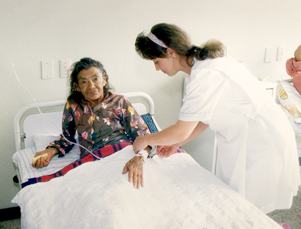
The Central American Survey on Diabetes, Hypertension and Risk Factors for Chronic Diseases, which is part of the Central American Initiative on Diabetes, represents a one-of-a-kind approach that relies on a single methodology to monitor chronic diseases and risk factors in an entire subregion. The survey studied the prevalence of diabetes, hypertension, obesity, and overweight, among other risk factors, in 8,383 individuals in the seven Central American countries; nearly 75% of them were administered blood tests to detect diabetes and high cholesterol. The Institute of Nutrition of Central America and Panama (INCAP) helped train and standardize the interviewers and optometrists; this important aspect of this endeavor helped increase the countries' technical capacity for surveillance of chronic diseases and risk factors.
The Survey of Risk Factors for Chronic Noncommunicable Diseases, which was conducted in Argentina in 2005, is designed to analyze inequalities by population groups. Results will make it possible to quantify health differences in vulnerable groups, target activities in the health sector, and facilitate promotion in other sectors.
The Caribbean Commission on Health and Development, which is a response to a regional and global initiative, presented a report on the health situation in the Caribbean and possible solutions to be pursued. The report concludes that the issues whose improvement would have the greatest effect on health are obesity and chronic noncommunicable diseases, HIV/AIDS, and violence. The report also urges that resources be mobilized to strengthen national and regional capabilities in health measurement and health statistics.
Ten years from the deadline set for meeting the Millennium Development Goals, various plans for social protection in health in the Region have been analyzed. Among the topics studied are the ability to improve equity in access to and use of health services, the capability to counteract social determinants harmful to health, and the ability to expand coverage and access to technically appropriate health programs.
The Global Youth Tobacco Survey–which collects information on prevalence, attitudes, and beliefs with regard to tobacco consumption–continued to be carried out in 2005. Meetings were held with government officials to analyze survey data as a way to formulate public policy for smoking control. To date, the survey has been used in almost every country in the Region.
In regards to epidemiological surveillance, PAHO continues to monitor the countries' progress in eradicating polio and eliminating measles and rubella on a weekly basis. In 2005, the weekly surveillance of congenital rubella syndrome was added to this effort. The countries, in turn, monitor progress at the municipal level. Most Regional surveillance indicators surpass the goal of 80%.
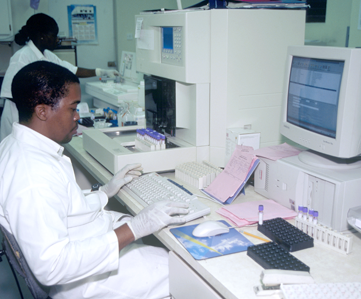
The SABE survey (Health, Well-being and Aging) was designed and conducted using a representative sample of 10,000 adults older than 60 years of age in seven capitals in the Region: Brasilia, Brazil; Bridgetown, Barbados; Buenos Aires, Argentina; Havana, Cuba; México City, Mexico; Montevideo, Uruguay; and Santiago, Chile. Bridgetown, Barbados; Brasilia, Brazil; Havana, Cuba; Santiago, Chile; Mexico City, Mexico; and Montevideo, Uruguay. Results revealed the health status of this population group and implications for the Region's health systems. Based on the information gathered by the survey, strategic guidelines have been developed to improve access to better services, train human resources in health to cope with the needs of this age group, achieve better health care and monitoring of older adults, implement regulatory frameworks to protect senior citizens living in long-term care institutions, and conduct public health research to identify major threats. A framework has also been proposed to help define public health system functions that promote health and well-being in old age, as well as standards to evaluate these functions and to establish performance and result indicators.
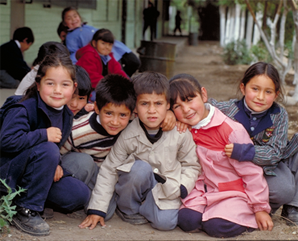
Knowledge about existing disparities in health status makes it possible to analyze the main determinants of inequalities and, thus, to help establish policies that ensure equity in health.
In Chile, coordination between the Ministry of Health, other ministries, the Solidarity and Social Investment Fund (FOSIS), the Latin American Faculty of Social Sciences (FLACSO), and PAHO has made it possible to focus the social agenda on health determinants. Clearly, partnerships between the government and civil society, as well as among various sectors, help make inequalities in health more visible and help place them on the social agenda; they also help redirect resources toward critical areas, where they are most needed.
Efforts continued to be made to place public health prominently in the regional political agenda. In the main, this was pursued by providing support for subregional health ministry meetings, such as the Health Sector Meeting for Central America and the Dominican Republic (RESSCAD), the Southern Cone Common Market (MERCOSUR), the Caribbean Community (CARICOM), the Organization of Eastern Caribbean States (OECS), the Amazon Cooperation Treaty Organization (ACTO), the Andean Health Agency-Hipólito Unanue Agreement (ORAS-CONHU), the Andean Community of Nations and the Council of Central American Ministers of Health (COMISCA).
At the IV Summit of the Americas held in November 2005 in Mar del Plata, Argentina, priority topics discussed included preparedness for the avian flu and the influenza pandemic, as well as the fight against HIV and efforts to achieve universal coverage with antiretroviral treatment.
Work continued on the WHO Framework Convention on Tobacco Control, which to date has been signed by 18 countries in the Region. Among the Convention's mandates, special emphasis was given to promoting smoke-free environments. Uruguay's successful experience in this regard is worthy of mention. Uruguay has become the first country in the Region to officially declare indoor public spaces to be 100% smoke-free.
The adoption of the International Health Regulation in 2005 was an important milestone. This powerful global instrument makes it possible to coordinate activities among Member States and provides a framework through which to recognize and report on international public health emergencies and to respond to them. Adopting the Regulation will pose challenges and present opportunities for PAHO and its Member States in the coming years. The state of alert regarding the avian flu and the influenza pandemic continues to be addressed, strengthening the countries' capacities and adapting their systems according to regulation standards.
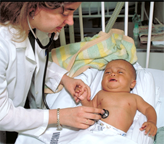 Networks of laboratories, epidemiological surveillance, and response to outbreaks–such as the Central American Network for Prevention and Control of Emerging and Reemerging Diseases (RECACER), the AMAZON NETWORK, CONOSUR network, and Carisurvnet (Caribbean Surveillance Network)–have joined the Regulation's work. The Caribbean port sanitation project—an appropriate response to a specific health-and-tourism problem—is yet another example of the progress that can be attained through horizontal cooperation among countries.
Networks of laboratories, epidemiological surveillance, and response to outbreaks–such as the Central American Network for Prevention and Control of Emerging and Reemerging Diseases (RECACER), the AMAZON NETWORK, CONOSUR network, and Carisurvnet (Caribbean Surveillance Network)–have joined the Regulation's work. The Caribbean port sanitation project—an appropriate response to a specific health-and-tourism problem—is yet another example of the progress that can be attained through horizontal cooperation among countries.
Chile's Ministry of Health has worked to regulate complementary and alternative medicine practices by issuing a decree that creates a legal framework for legalizing such practices. A working group was constituted to formally recognize alternative medical practices as auxiliary health professions; the group's work led to the issuance of a decree to this end. This progress is important because complementary practices (acupuncture, homeopathy, naturopathy, chiropractic and flower essence therapy) constitute an important part of health services, and one relied upon by marginalized populations with problems of access to traditional services.
Regarding the prevention of and caring for the victims of gender-based violence, PAHO's model was used as a base for developing laws and policies on the issue: Brazil established a new law, Honduras amended an existing one, the Dominican Republic developed a proposal for municipal policies, and Costa Rica designed a system for monitoring the implementation of public policies on the issue. Also, according to recommendations from the Subcommittee on Women, Health, and Development, and with participation of 10 countries, the Regional Observatory on Health and Gender-Based Violence was launched.
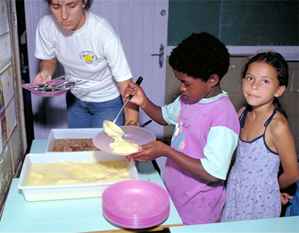
Adequate and reliable data on health problems, as well as evidence-based policies and plans, are critical elements for developing a sustainable capability for effectively solving public health problems.
The English-speaking Caribbean countries have relied upon a strategic approach for strengthening the evaluation, implementation, and improvement of national health information systems. Brazil has enhanced the National Surveillance System of Food and Nutrition by generating indicators and training state- and municipal-level technical personnel in how to use the system.
In Brazil, PAHO, the Ministry of Health, and the Council of State Secretaries of Health adapted the methodology and instruments of the essential public health functions to Brazil's Unified Health System. Performance self-evaluations are being carried out in five states; where completed, results are being incorporated into health plans and initiatives. In Argentina, evaluations of essential public health functions also have been conducted in three provinces with high levels of poverty and health care models that in recent decades have excessively concentrated resources in urban hospitals. Applying these evaluations at the subnational level also makes it possible to identify critical areas, reallocate resources, design and carry out initiatives and plans, and help reduce regional gaps within a country.
In a joint effort with the World Bank, the Internet distance-learning course "Strengthening Essential Public Health Functions" was carried out from October 2005 through January 2006; 840 public health workers from around the world submitted requests for enrollment. The course's first round had 84 participants, half of whom came from the Americas. Of those registered, 51 (61%) successfully completed the course.
In Ecuador, the Ministry of Public Health's budget has been steadily increasing in terms of its percentage of the overall government budge—in 2000 it was 2.4%, and in 2006 it reached 6.2%. This growth reflects the political will to increase social investment and the joint efforts of PAHO, the Ministry of Public Health, the Ministry of Economy and Finance, and the National Congress.
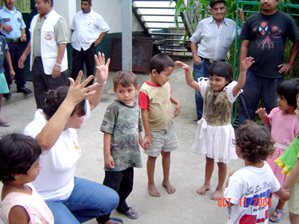
The public health campaign to prevent obesity in Latin America: A comer sano y a moverse América! ("America: Eat Healthy and Move!") was launched in partnership with UNIVISION, the Spanish language network, as part of the Global Strategy on Diet, Physical Activity, and Health in Latin America and the Caribbean.
Bioethics committees and research committees continue to be formed and strengthened in the Region. In some countries these committees have been created only recently, but in others they have penetrated all levels of the health systems, resulting in greater protection of the population and increased confidence in the quality of benefits it receives.
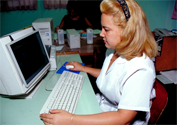 The Virtual Health Library (VHL) is also part of the effort to promote and disseminate PAHO's knowledge; VHL has been adopted by all Member Countries and evaluations have demonstrated its impact at the national and international levels. The Dominican Republic is undergoing a consolidation process, having reiterated its commitment to VHL in 2005. VHL has made it possible for health information generated in the country to be made available to all interested parties, without geographic or time limitations. Furthermore, it has facilitated linkages with other projects such as HINARI (the Health InterNetwork Access to Research Initiative), a WHO initiative that has entered into agreements with the world's major publishing houses whereby they offer free electronic access to many biomedical journals. The Dominican Telecommunications Institute is negotiating with HINARI to establish a shared subscription covering 15 provincial and municipal hospitals and one general hospital.
The Virtual Health Library (VHL) is also part of the effort to promote and disseminate PAHO's knowledge; VHL has been adopted by all Member Countries and evaluations have demonstrated its impact at the national and international levels. The Dominican Republic is undergoing a consolidation process, having reiterated its commitment to VHL in 2005. VHL has made it possible for health information generated in the country to be made available to all interested parties, without geographic or time limitations. Furthermore, it has facilitated linkages with other projects such as HINARI (the Health InterNetwork Access to Research Initiative), a WHO initiative that has entered into agreements with the world's major publishing houses whereby they offer free electronic access to many biomedical journals. The Dominican Telecommunications Institute is negotiating with HINARI to establish a shared subscription covering 15 provincial and municipal hospitals and one general hospital.
In Puerto Rico, specific projects have focused on supporting health system reform through three activities: analysis of the country's health sector; analysis of and plan to strengthen the National Health Authority's steering function; and profile of Puerto Rico's health system. The project to implement geographic information systems has helped support the country's Ministry of Health's capabilities in epidemiological analysis and surveillance. Negotiations are under way to cooperate with the Department of Health in e-Health/Telemedicine, with support from the University of Puerto Rico and the Industry University Research Consortium.
In order to reach urban and rural areas that have no medical services, various strategies being implemented in the Region to train physicians and other professionals in primary care and public health and encourage them to work in these areas. In Cuba, the Family Doctor Program has been consolidated, which has complete coverage in the country, and the capability for solving health problems has increased by expanding and strengthening polyclinics. In Brazil, the Family Health Program is fully developed; it emphasizes multidisciplinary training within the primary care strategy. In Peru, professional health education stresses an intercultural approach and community practice with social participation. In Argentina, the Community Medical Program that was implemented in 2004 is based on an agreement established between the Ministry of Health and 16 universities from different regions of the country. It offers basic training coupled with specialized personnel in pedagogy, planning and locally managed services, environmental health, and epidemiology. In Venezuela, the most recent example of this kind is a mass effort in medical education, with the creation of a new profile of health professionals aimed at serving marginal and remote communities, as well as a proliferation of polyclinics with complete diagnostic and treatment equipment (Barrio Adentro II, "Inside the Neighborhood II" in English).
Other innovative experiences have emerged in the Region in response to the problem of unequal access to skilled health workers. Some institutions train health professionals from marginalized or disadvantaged communities, as does the Rural Medicine Program of the University of Illinois in the United States and the close cooperation that the Latin American School of Medicine in Cuba provides to other countries, which trains more than 8,000 students from 20 countries in the Region.
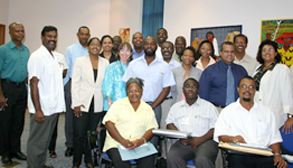
PAHO, Health Canada, and the Province of Ontario's Ministry of Health joined forces to hold the Seventh Regional Meeting of the Observatory of Human Resources in Health in Toronto, Canada, in October 2005. Working-group conclusions converged into the "Call for Action for a Decade of Strengthening Human Resources in Health in the Americas" (2006–2015), which promotes the development and retraining of health workers as a way to meet the MDGs and provide access to quality medical services for the entire population of the Americas by the year 2015, according to national health priorities. Participants at the meeting recommended that the Toronto Call for Action become a document that promotes the collective, long-term, intentional, and coordinated efforts of all levels (international, regional, subregional, and national) in the health sector, in other relevant sectors, and in civil society, to promote, develop, and consolidate the health workforce in every country of the Region.
Serious imbalances persist in the distribution of health workers in the Region, both within countries and from country to country. The number of physicians and nurses per 10,000 inhabitants (density) in 11 countries is greater than 50, which translates into 39.7% of population in the hemisphere having 73.2% of total physicians and nurses. In the 15 countries with a density below 25, the figures translate into 19.5% of the regional population having 6% of the human resources in health. With few exceptions, differences in concentration of physicians and nurses continue to be extreme between urban and rural areas.
 This year, the annual commemoration of World Health Day honored health workers as the most valuable public health resource. On that occasion, the Director of PAHO called on everyone to celebrate the dedication, commitment, vocation, and great contribution of all health workers in the Americas. She emphasized the need for continuing to build mechanisms to strengthen the health sector, which for many years has had neither the criteria nor the resources for best performing its functions that are so necessary to society. She also stressed that the day was dedicated to all those who directly or indirectly help improve the well-being of the population by preventing and treating disease—physicians and nurses, other health workers, public policymakers, scientists and professors, as well as all the women and men who devote their time and efforts to promote health as an essential part of their daily work, whether they get paid or volunteer their work.
This year, the annual commemoration of World Health Day honored health workers as the most valuable public health resource. On that occasion, the Director of PAHO called on everyone to celebrate the dedication, commitment, vocation, and great contribution of all health workers in the Americas. She emphasized the need for continuing to build mechanisms to strengthen the health sector, which for many years has had neither the criteria nor the resources for best performing its functions that are so necessary to society. She also stressed that the day was dedicated to all those who directly or indirectly help improve the well-being of the population by preventing and treating disease—physicians and nurses, other health workers, public policymakers, scientists and professors, as well as all the women and men who devote their time and efforts to promote health as an essential part of their daily work, whether they get paid or volunteer their work.
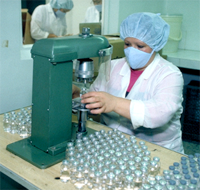 Advocating for access to essential quality drugs and their rational use is an essential activity in the struggle against inequalities. In Brazil, the National Agency of Health Surveillance, the Department of Pharmaceutical Assistance, and PAHO are working together to improve the use of drugs. In 2005, the results of an evaluation on the availability of pharmaceutical assistance as a baseline for pharmaceutical services in the country were published and the First National Congress on Rational Drug Use was held.
Advocating for access to essential quality drugs and their rational use is an essential activity in the struggle against inequalities. In Brazil, the National Agency of Health Surveillance, the Department of Pharmaceutical Assistance, and PAHO are working together to improve the use of drugs. In 2005, the results of an evaluation on the availability of pharmaceutical assistance as a baseline for pharmaceutical services in the country were published and the First National Congress on Rational Drug Use was held.
In August 2005, representatives form the ministries of health from Argentina, Bolivia, Brazil, Chile, Colombia, Ecuador, Mexico, Paraguay, Peru, Uruguay and Venezuela met in Buenos Aires, Argentina, for the Second Round of Price Negotiations for Antiretrovirals and Reagents for Diagnosis and Monitoring of HIV. The main goal was to extend coverage with antiretrovirals by making prices more accessible for people with HIV in the Region, as well as to establish marker prices. Twenty-six pharmaceutical companies responded; the process brought together governments, civil society, and international agencies, with strong support from PAHO. Reductions in prices between 15% and 55% were obtained for the most-used treatments, especially for first– and second–line drugs. As a result of these negotiations, countries can bring on line many more people into their respective treatment regimens. The participants asked PAHO to establish a monitoring and evaluation system for implementing the negotiation results, to overcome obstacles so that the prices could be effectively applied and used in purchases in the Region. It is worth mentioning that the negotiated prices are being used by various purchase mechanisms as marker prices, not only in the countries that participated in the negotiation, but also in Central America and the Caribbean, as well as in purchases that PAHO makes through the Strategic Fund.
As is customary, international evaluations of national immunization programs were conducted. These evaluations aim to improve the performance of national immunization programs and to develop strategic five-year immunization plans based on the evaluation results. The components evaluated included programming, organization and coordination, human and financial resources, training and supervision, information systems, epidemiological surveillance, operational evaluation and research, safe vaccination, cold chain, supplies, public communication and community participation, and observation of health workers. In 2005, Saint Lucia and the five islands of the Netherlands Antilles and Aruba were evaluated. In 2006 (as of 31 July), the Bahamas, the Dominican Republic, and the French department of Martinique were evaluated.